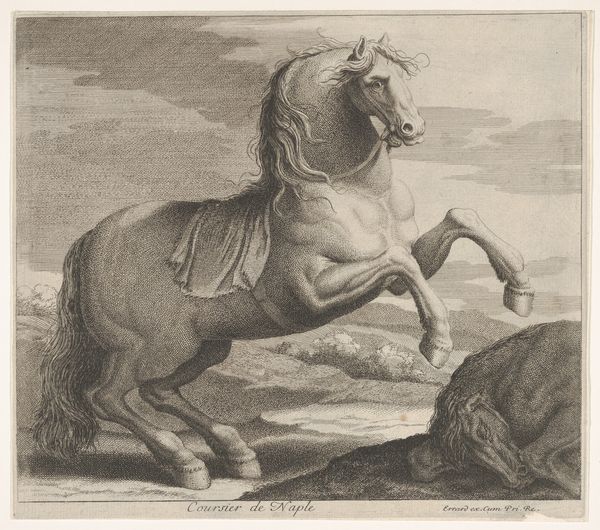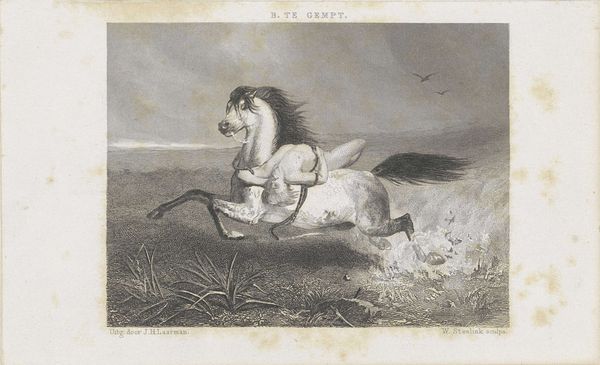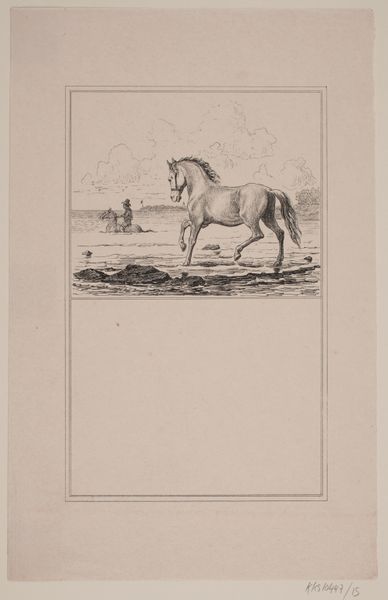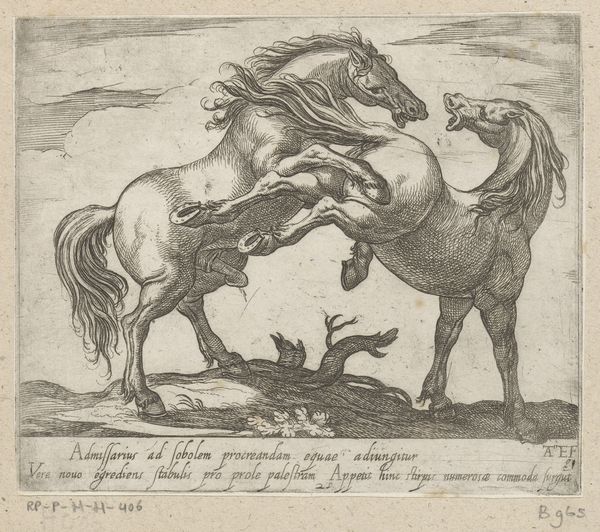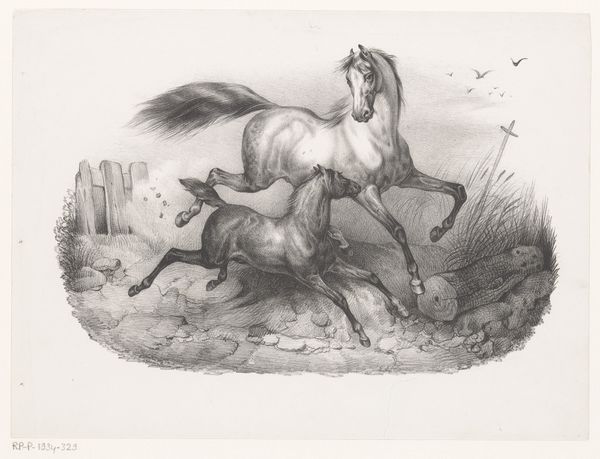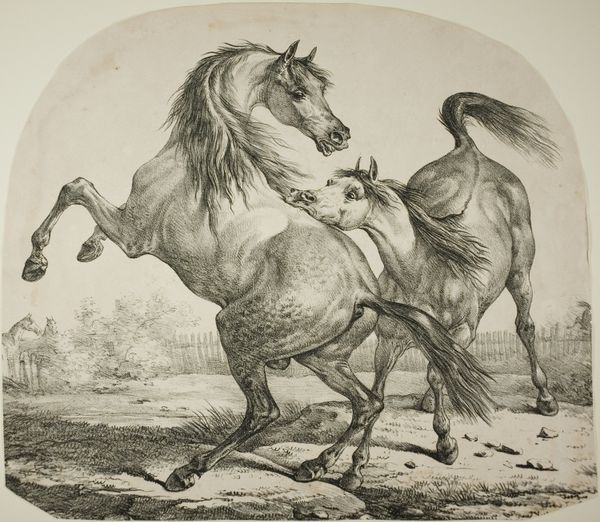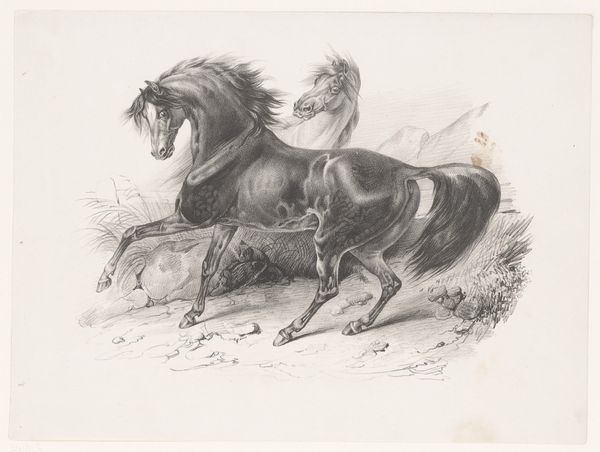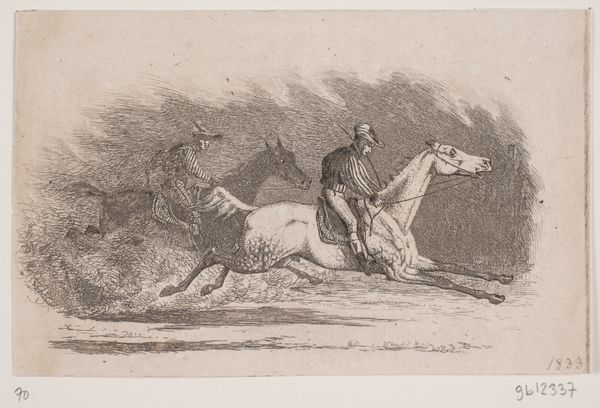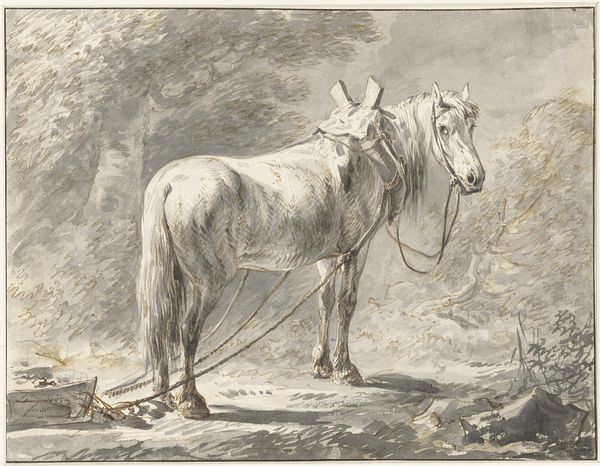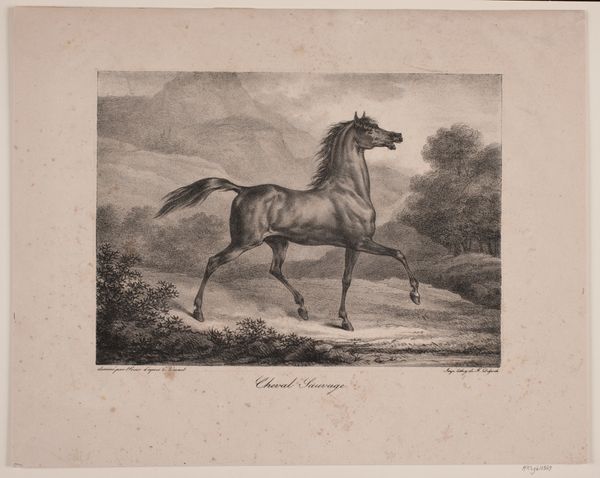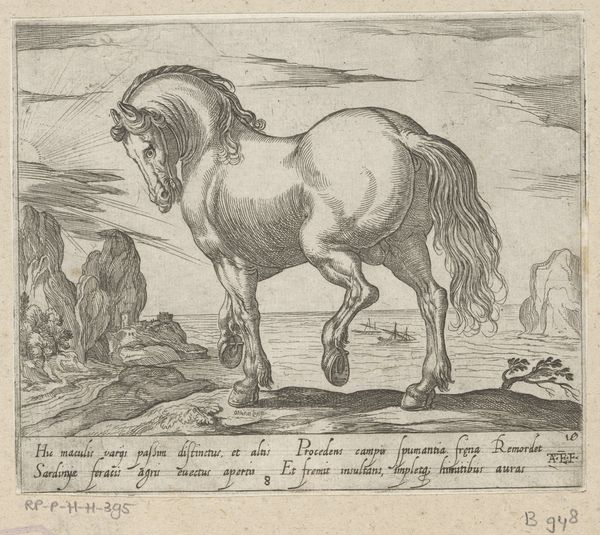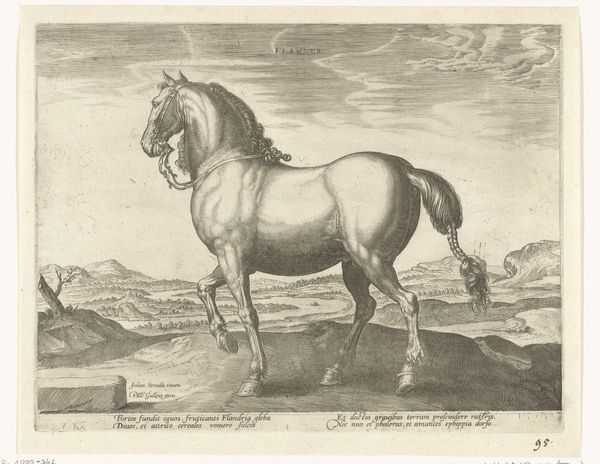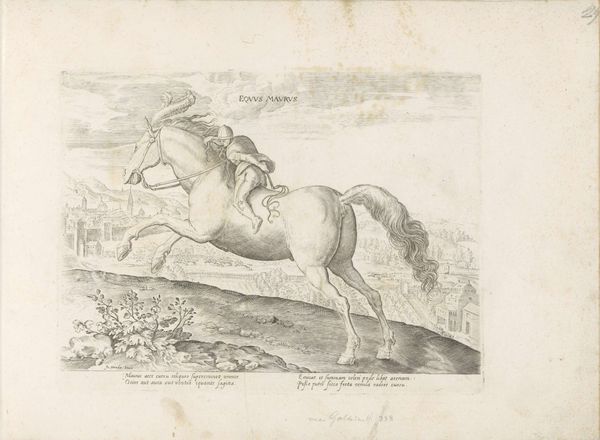
print, engraving
# print
#
landscape
#
figuration
#
romanticism
#
history-painting
#
engraving
Dimensions: image: 33.8 x 44.6 cm (13 5/16 x 17 9/16 in.) sheet: 48.6 x 62.7 cm (19 1/8 x 24 11/16 in.) mat: 55.9 x 71.1 cm (22 x 28 in.)
Copyright: National Gallery of Art: CC0 1.0
Curator: This is James Ward's "Marengo," an engraving created in 1824. It depicts Napoleon’s famed warhorse. The print captures a somewhat desolate, moonlit landscape. Editor: There’s an immediate starkness. The cool grays, the lone figure perched on the rocks... it gives a somber, almost haunting feel. And that stark light shining off the horse suggests an eerie strength. Curator: Note the artistic labor involved. The intricate engraving technique suggests a painstaking process, replicating an image for wider distribution. Prints like this played a role in constructing and circulating historical narratives. What story does it tell, though? Editor: It's about power, visibly expressed. The formal rendering of the horse, every muscle carefully etched, speaks to its strength and spirit. The composition throws you: a beautiful animal in stark relief in its desolate setting. I see an allegory for leadership, or its toll. Curator: Perhaps. Consider the social context. This engraving romanticizes Napoleon's era well after his fall, playing into British fascination and simultaneous critique of the fallen Emperor. Its circulation taps into a whole industry of historical narrative building. It seems like Marengo's image, and by association Napoleon's, has become a kind of brand. Editor: But let’s not forget the pure formalism: the tonal gradations create volume, the contrast guides our eye across the composition. How much detail and technical finesse can you achieve just by carving lines into a plate! Curator: Absolutely. It's the tension between that technical skill and the historical weight that fascinates me. The material production carries ideological significance: crafting an image of power in the service of... well, whose power, ultimately? Editor: It makes one contemplate how our perceptions are shaped, by romanticism, historical event or artistic execution. There’s beauty in its melancholy and the skill on display. Curator: A convergence of technique, context, and meaning, perfectly illustrative of a turbulent moment. Editor: Yes. Seeing the composition as a whole helps me to appreciate not just skill, but also intention of a singular historic artwork.
Comments
No comments
Be the first to comment and join the conversation on the ultimate creative platform.
